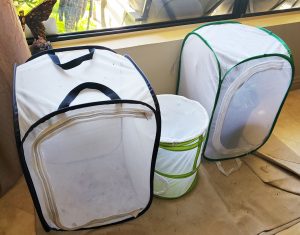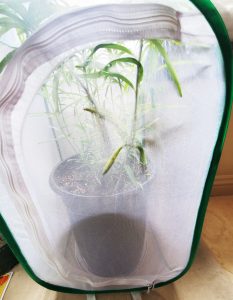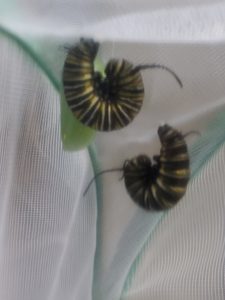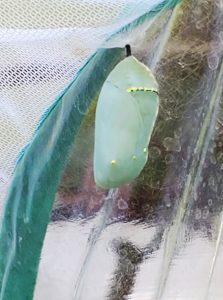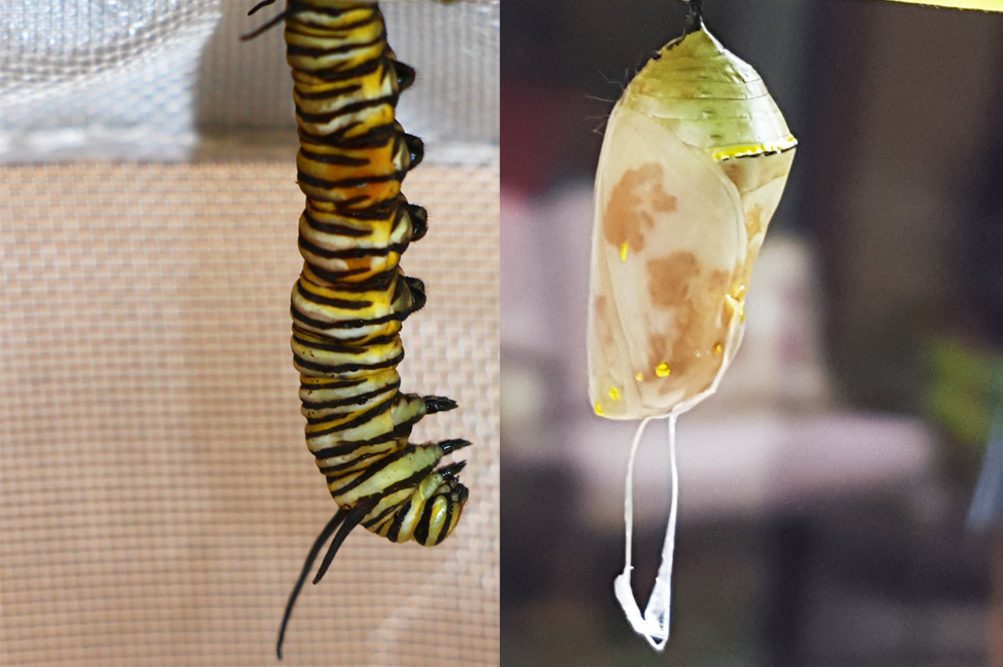
12 Apr Tachinid Flies Lay Eggs in Monarch Chrysalis
TAHINID FLY PREDATOR
When the monarch butterfly is in the pupae stage, inside its chrysalis, it is prey to the tachinid fly which drill a hole in the chrysalis and lay its eggs inside. This kills the butterfly and leaves these tell tale signs:
The chrysalis will turn from light green to a blotchy brown/black. 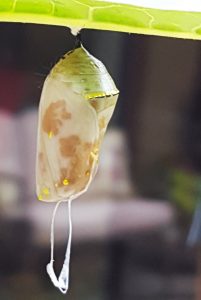
The chrysalis will become mushy.
A string will hang from the bottom of the chrysalis.
The best thing to do when this happens is to remove the chrysalis and flush it down the toilet to stop the increase of tachinid flies in your garden.
It is sad to see, but a natural part of Nature’s insect-eat-insect world
If I’m having an obvious infestation of tachinid flies (several chrysalis are being destroyed by them), I watch my monarch caterpillars for when they are ready to make their trek to create their chrysalis. I can tell because they are 12 to 14 days old, they are about 2″ long and full bodied, and they start crawling off the plant, having lost interest in eating any more. I then put them in my net habitat to make their chrysalis in a safe place, where neither flies nor praying mantis nor wasps can get to it! In 2 weeks, the new butterfly is ready to emerge (eclose), and it is so much fun to see the new monarch, to get it on my finger after 2 hours of hanging upside down to cure/harden its wings, and release it to the world.
Many people choose to raise monarch butterflies in habitats to protect them from tachinid flies and other predators. My favorite habitats are those I can place full potted milkweed pots inside that already have eggs or small caterpillars on them. I add caterpillars to the plant as I find them in my garden on other milkweed plants. The smaller the caterpillar, the more likely it has not already had a tachinid fly lay eggs in it, so I gather them and put them on plants in habitats as soon as I can.
My preferred habitats area available at http://www.tinyurl.com/MonarchProducts.
